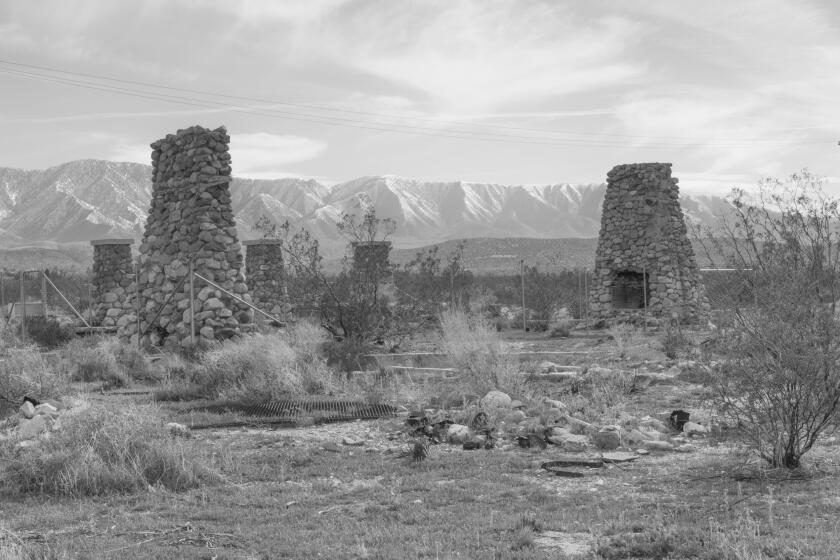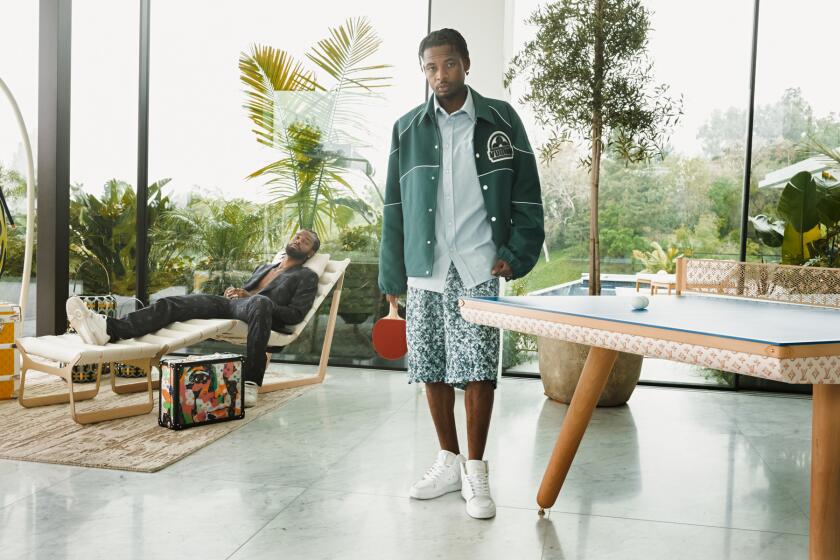
- Share via
This is Out Here, an insider’s look at the everyday beauty of exteriors — architecture, façades, urban design, blueprints for a brand new world.
Alejandro Orozco Perez, a.k.a. Pollo, is from a ranchito called Teocaltiche, in the Mexican state of Zacatecas. He came to L.A. more than 11 years ago, at 20 years old, and has been working as a gardener most of that time. At the root of it, this job has been a means to provide for his family. “Para salir adelante,” Orozco Perez explains. “En toda familia, una persona se tiene que sacrificar. Y pues, me toco a mí.” (“There’s always one person in the family that has to sacrifice. And, well, I was it.”) But over the years the practice of landscaping has taken on meaning beyond the pragmatic. The connection with the land, the ability to create something beautiful out of nature every day: This is the stuff of calling.

“Cuando haces las cosas con cariño y con pasión, desde lo más básico, lo más simple, a los más grande — por ejemplo, cuando usted mira las rosas bien bonitas, bien pulidas, hasta el zacate bien verde, bien cortadito, bien bonito, o los árboles bien entresacados, la palma bien limpia — es un arte.” That is, when you do things with care and passion, when your work truly transforms material — from roses to green grass to palms — into something original, you are elevating it into art.
Landscapers are architects of beauty in Los Angeles‚ the stewards of the land, whisperers of the plants. Their bodies of work are all around — we are inside a live group exhibition created and cared for by workers who walk among us. Drive past that one house on the coast with the faultlessly manicured lawn and towering trees illuminated by LED spotlights, or take a deep breath by the Craftsman in Jefferson Park, its front yard luscious with fragrant lavender growing in a way that feels wild and chaotic, but in reality is methodically designed to look just so, and you’ll see: For L.A. landscapers, it’s all in the details.
You don’t need to look very far to envision what Los Angeles might look like in the not-so-distant future. Visit the Antelope Valley and see for yourself
The job requires an intuitive knowledge of style and the earth. It’s not just about throwing a plant in the dirt and pouring water on it — it’s about finding a form to bring ideas to life, which changes from garden to garden. There’s a complexity to gardening, Orozco Perez explains, that calls for a loving and intense attentiveness to details that in this context are big — an understanding of different types of soil and fertilizer, whether a certain plant will thrive in a particular environment, how roots intertwine beneath the dirt, how a bush will look once it grows out. Owners sometimes ask for Orozco Perez’s opinion on what will look good, and he lives for moments when he can flex his expertise. His specialty is imaging up a landscape that utilizes pebbles and rocks, trees that are more natural, with lights illuminating them at night, and flowers like gardenias that perfume the entrance to a home.
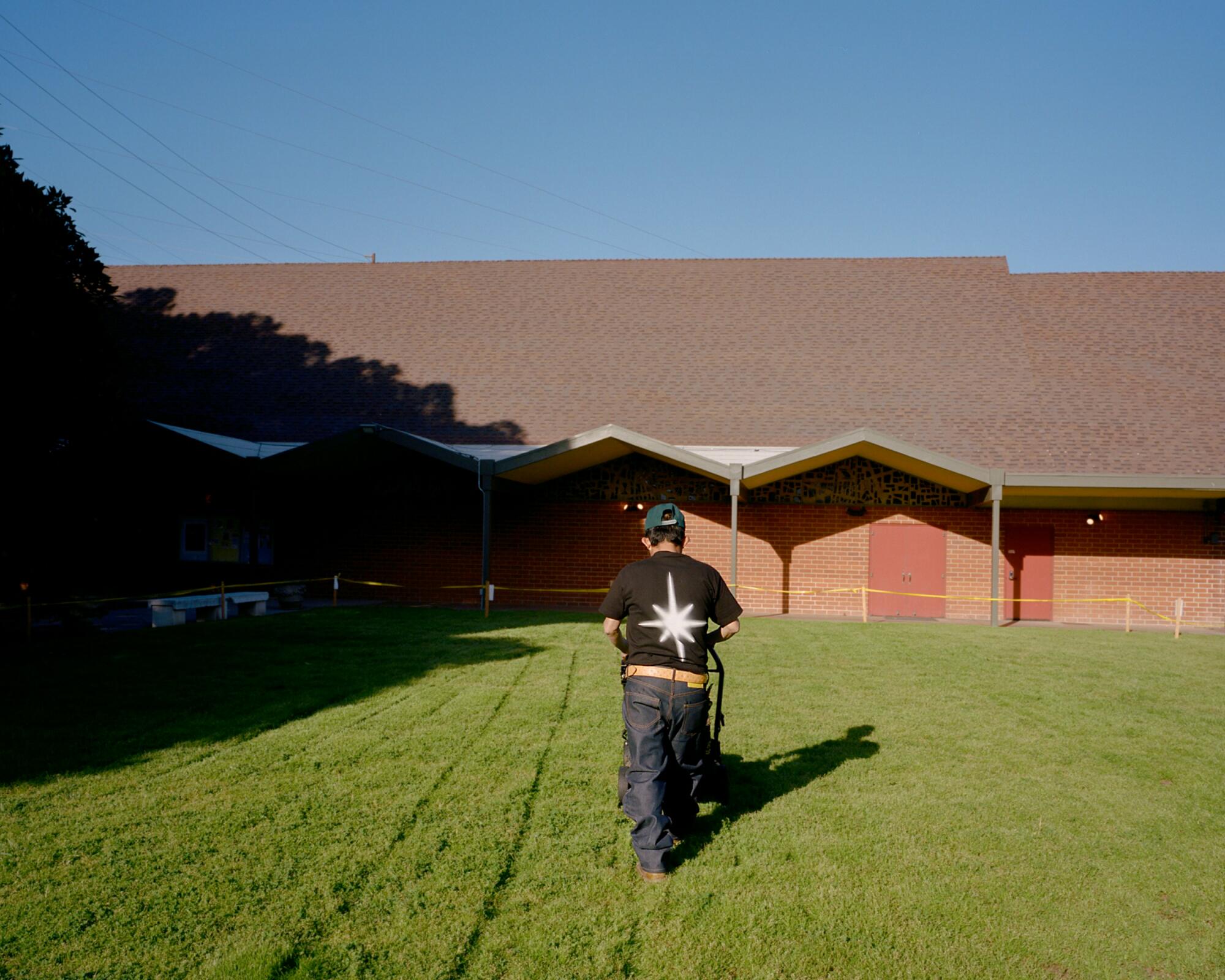
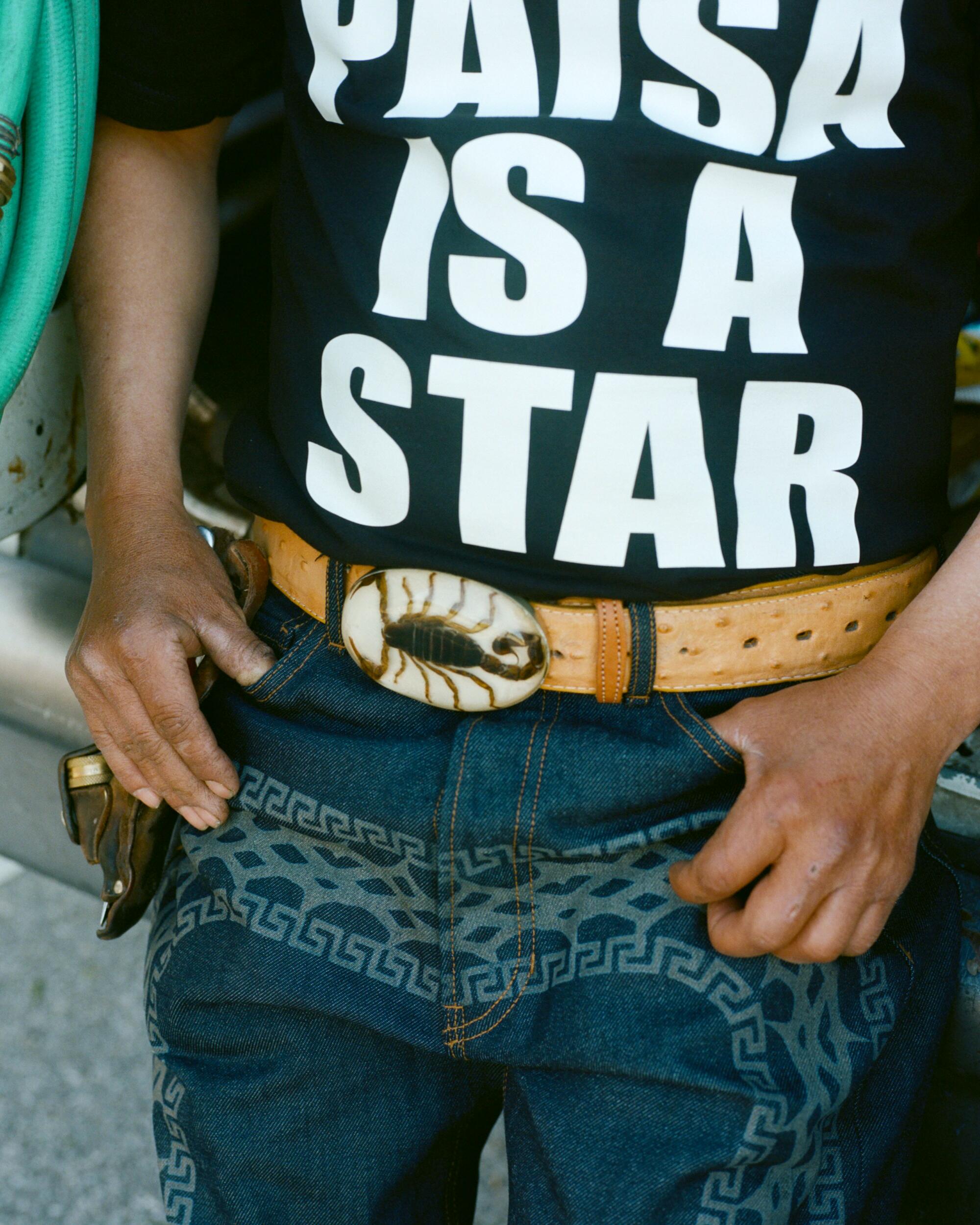
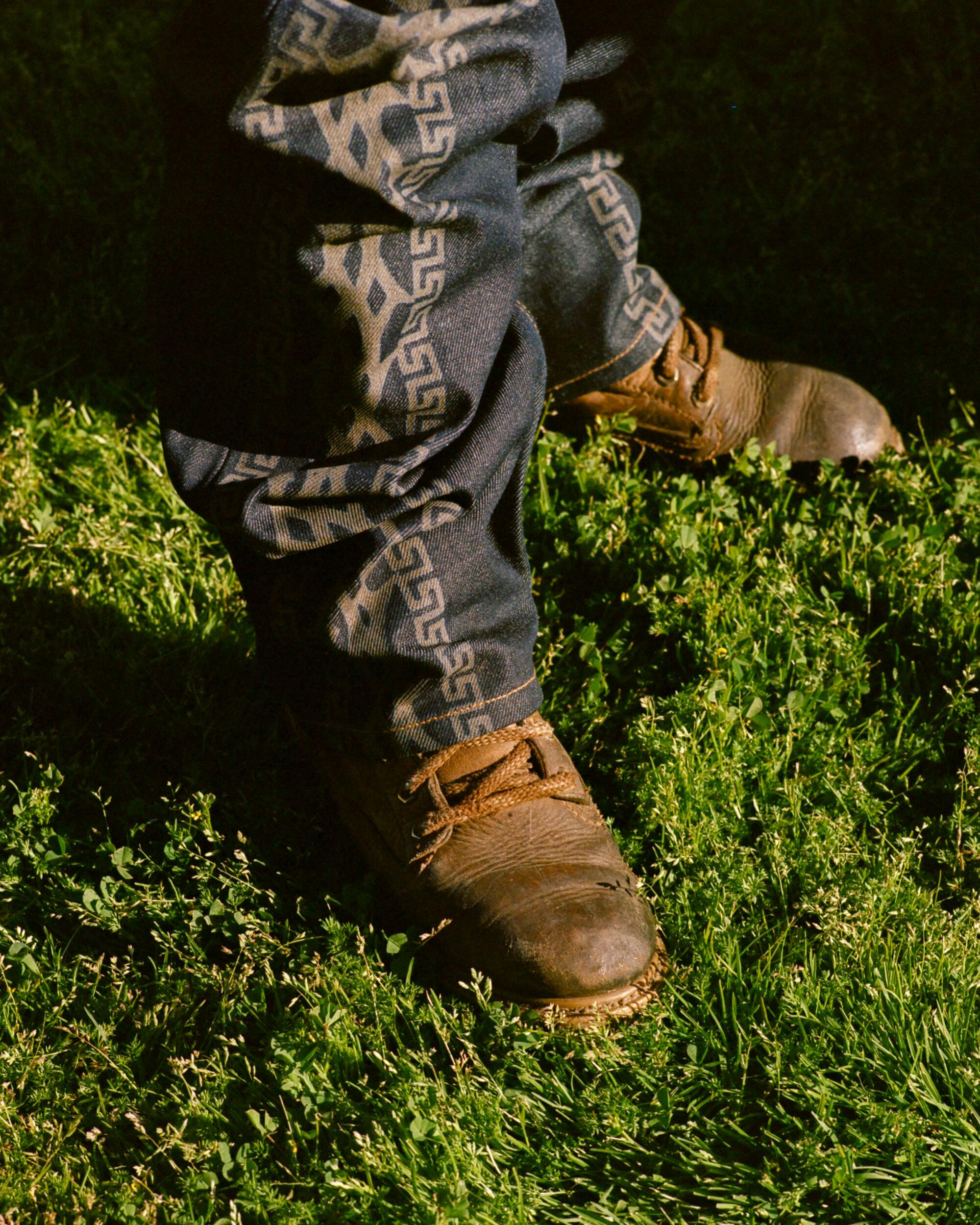
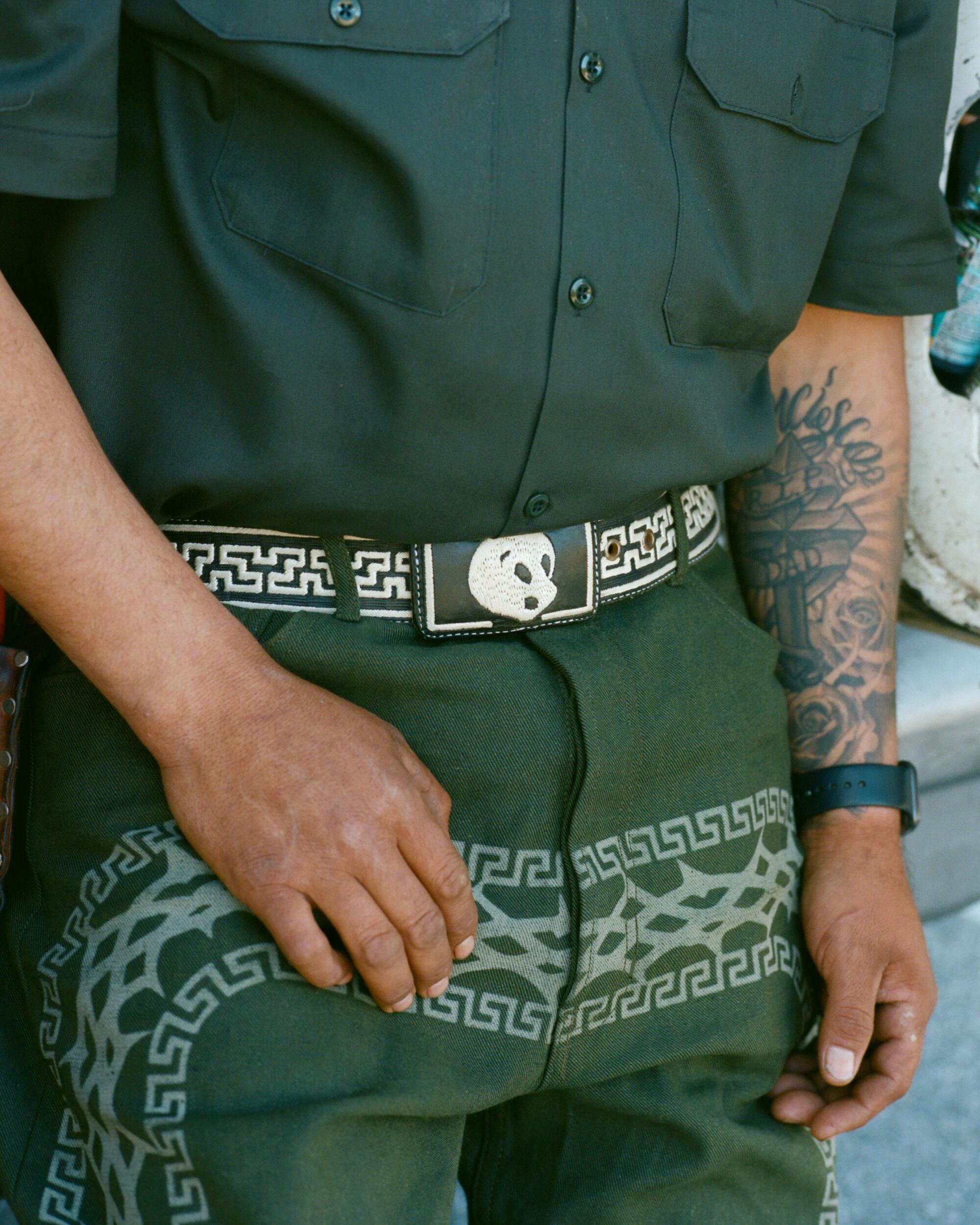
Another prerequisite is physical and emotional toughness. From the strain on your body to the burden on your psyche — many landscape artists shoulder the responsibility of sending money to their families back home. The mornings are always early, there are noise complaints and city ordinances that often make their jobs harder. But the perceptions that the job is undesirable or all bad are just wrong, says Orozco Perez. The most beautiful parts of the craft for him have been the camaraderie and laughter, being able to meet the soil with his hands every day at beautiful homes across the city.
Paisaboys, the streetwear brand founded and designed by Joey Barba and Javier Bandera, celebrates L.A. folks whom they consider undervalued, like gardeners. Both Barba and Bandera have a lifelong connection to the profession — Barba has been working as a gardener for years in his family business, and Bandera, who grew up washing cars with his dad, has always shared a symbiotic relationship with them. “There’s always an energy there where it’s the gardeners, the pool guys, the mobile car wash … it’s us and them [the owners of the house].” With campaigns that star gardeners that Barba works with every day (Orozco Perez included), Paisaboys shifts the focus. “We shine a light on people that kind of feel invisible. That demographic of people who we always felt were a part of that and never really got any kind of recognition or light shone on us.”
A Paisaboys piece, like the Charro/Psycho denim pants or the Chalan workshirt, is meant to be worn by those who share an immediate understanding of its motifs, message and function. In this context, the wearer becomes the centerpiece because they have the experience — a knowing of how to wear it and when.
At a recent shoot, skillfully captured by photographer Carlos Jaramillo, Orozco Perez and Armando, a.k.a. El Muñeco, bring one of the Paisaboys’ most iconic T-shirt slogans to life: “Every Paisa Is a Star.” We get to witness these men fashionably in their work element: cutting grass at golden hour, scaling a palm tree like a mythical being that defies gravity. This is where a Paisaboys piece hits the hardest.

There’s a massive Moreton Bay fig in front of St. John’s Presbyterian Church that’s nearly 150 years old. Barba and his family have been charged with taking care of it once a week for years. They pick up the leaves and fruit it drops and place it back at its base in tight mounds, aiding in its self-sufficient process of decomposition and rebirth. Once a year they give it vitamins, but for the most part they just bear witness to it. They don’t cut it, they don’t water it — its roots go deeper than any hose could reach anyway. Working on the tree is one of the jobs on his route that has helped Barba understand the unique responsibility gardeners have to the aesthetic imprint of the city, how, despite being arduous and taxing, it’s a job that has bright moments of tranquil joy that you might get from an afternoon spent painting a watercolor. For Orozco Perez, that revelation has come from his connection to the earth here — the fact that it’s become a part of him. “Pienso que somos como uno mismo,” he says.
Most of all, Barba gets that behind every naturalized garden in Echo Park overflowing with native plants (which is very now) is a person, with their own wants, needs and desires. “Sometimes I hear the neighbor’s gardener. It’s, like, 8 a.m. and I get up and close the window because it’s loud,” Barba says. “Many people wake up, hear that, and they’re like, ‘Oh, God,’ — it’s just a noise to them. But me, being on the other side of that, I know that every single one of those people has a set of experiences, a whole life, a whole story, problems, sense of humor. If we can make a shirt off of every single story, it would be an endless amount of material that we have.”

